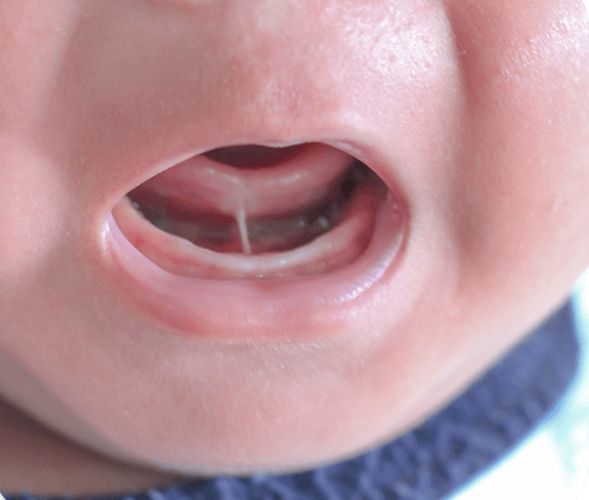The piece of tissue joining the underside of the tongue to the floor of the mouth is called the lingual frenulum. When this is short, thick or extends right to the tip of the tongue, it may be described as tongue-tie or ankyloglossia. Tongue-ties are observed in 4%-11% of babies though an exact number is not known.
They are congenital, meaning they are present at birth, and are believed to result from both genetic and environmental factors.
Tongue-ties are particularly important in neonates, as they cause reduced mobility of the tongue in the forward, upward and side direction and thus, have an effect on feeding.
While you may not always be able to spot a tongue-tie in your infant, there are signs and symptoms- which primarily occur during breastfeeding- that may indicate the presence of a lingual frenulum abnormality:
- Inability to fully open their mouth during breastfeeding
- Difficulty latching
- Frequent or long feeds
- Fussiness during breastfeeding
- Chewing or biting during breastfeeding
- Clicking noises and/ or dribbling during feeds
- Choking on milk
- Excessive reflux
Mothers can also experience pain during breastfeeding, low milk supply, exhaustion from frequent/constant feeding as well as distress from failing to establish breastfeeding.
Occasionally, bottle fed babies with feeding issues such as problems with dribbling large volumes of milk, excessive clicking on the teat, severe colic or reflux may need to be assessed for tongue-tie.
The decision on whether or not a tongue-tie is impacting on feeding and whether it is appropriate to offer to divide will be made after a detailed history and examination has been taken. It is strongly recommended that an assessment by a practitioner skilled in breastfeeding (lactation consultant/ midwife/ health visitor) has been carried out prior to your visit, including observation of feeding and positioning.
The tongue plays an important role in:
- Feeding (breastfeeding babies)
- Speech (talking)
- Breathing
- Swallowing
- Chewing
- Sleep
- Tooth and jaw development


